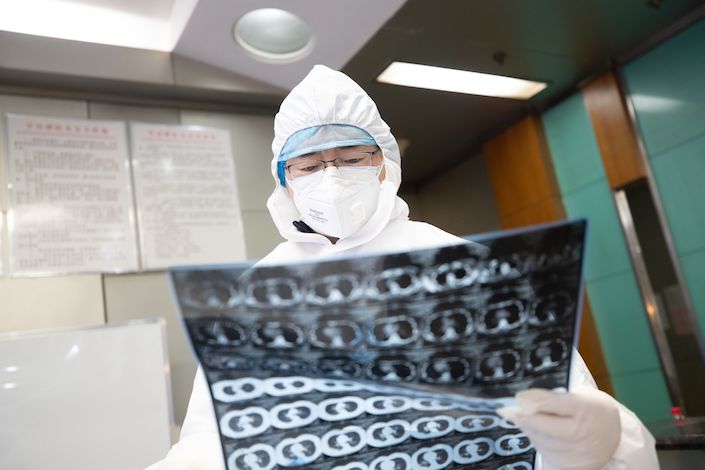Coronavirus Study Finds Incubation Period of Up to 24 Days

 |
The study, produced by at least three dozen researchers from Chinese hospitals and medical schools led by Zhong Nanshan, a Chinese epidemiologist who discovered the SARS coronavirus in 2003, showed that much is still unknown about the deadly virus named 2019-nCoV. An early-identification method might have defects that could have resulted in large numbers of infected people going undiscovered, the researchers found.
Fever occurred in just 43.8% of patients but later developed in 87.9% following hospitalization, according to the study. Absence of fever in 2019-nCoV cases was more frequent than in SARS and MERS infections, the study found. Such patients may be missed if the surveillance case definition focused heavily on fever detection, the authors said.
Previously, before patients went through nucleic acid tests (NATs) to confirm infection, their CT scans had to show signs of viral infection, commonly reflected as ground-glass opacity or bilateral patchy shadowing in the chest. But among the 840 patients in the study who underwent CT scans, only half showed ground-glass opacity and 46% showed bilateral patchy shadowing. This means that relying on CT scans alone could fail to identify a significant proportion of infected patients, the researchers said.
On Jan. 27, the National Health Commission revised its diagnostic criteria, no longer requiring that CT scans show pneumonia image to identify suspected cases. But as there is growing concern that the NATs are producing large numbers of false negatives, some doctors suggested the inclusion of CT scanning as a key basis for diagnosing coronavirus infections.
The study, published Sunday on medical research archive medRxiv, is a prepublication paper and has not been peer-reviewed and therefore should not be used to guide clinical practice, medRxiv said.
The patients in the study came from 552 hospitals in 31 provinces from Jan. 1-29. Only 1.18% of patients had been in direct contact with wildlife, where researchers speculate the virus might have originated.
Nearly one-third of them had been to Wuhan and 71.8% had been in contact with someone from Wuhan, the epicenter of the outbreak, providing further evidence of human-to-human transmission. The findings are consistent with recent reports of infections from family gatherings and transmission from people without any symptoms.
The study cannot preclude the presence of “super-spreaders,” a small group of people who transmit infections to far more people than the majority do, the authors said. In the 2003 SARS outbreak, a doctor who had treated SARS patients in Guangdong infected 16 others when he traveled to Hong Kong to attend a family wedding. These guests then traveled to other countries, spreading SARS into a global epidemic.
The routes of transmission might have contributed considerably to the rapid spread of the new virus, the study concluded. Like SARS and Middle East Respiratory Syndrome (MERS), the conventional routes of transmission of the new coronavirus consist of respiratory droplets and direct contact.
However, the study found that four out of 62 stool specimens, or 6.5%, tested positive to 2019-nCoV, and four more patients who tested positive in rectal swabs had the 2019-nCoV detected in the gastrointestinal tract, saliva or urine. Therefore, the researchers called for integrating systemic protection measures, taking into account transmission via gastrointestinal secretions.
The study also provided a glimpse into how much threat of infection medical workers face. Among the 1,099 patients, 2.09% were medical workers.
As of Monday, confirmed cases in China rose to more than 40,000 with more than 900 deaths. China’s health authorities haven’t disclosed how many medical workers are infected. But a recent paper released by the South Central Hospital of Wuhan University, one of the designated hospitals to accept coronavirus patients, showed that 40 doctors and nurses were confirmed with infection as of Jan. 28.
Contact reporter Denise Jia (huijuanjia@caixin.com) and editor Bob Simison (bobsimison@caixin.com)

- PODCAST
- MOST POPULAR






